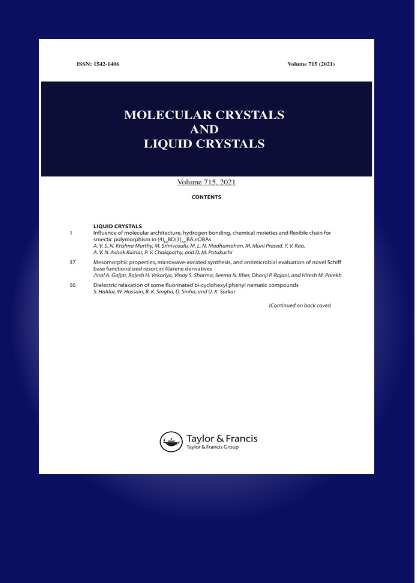Fe 3 O 4 -Au nanohybrids as novel SEIRA and SERS substrate for Glycine detection
IF 0.7
4区 化学
Q4 CHEMISTRY, MULTIDISCIPLINARY
引用次数: 0
Abstract
AbstractFe3O4-Au hybrid nanostructures combining magnetic and plasmonic properties based on nanomagnetite and Au nanocrystals have been synthesized and characterized. The SEIRA and SERS signal enhancement of Glycine adsorbed on these hybrid nanostructures was obtained. It is shown that different molecular groups of Glycine are enhanced in different ways, depending on the type of interaction and the orientation of the molecule relative to the surface. According to the results of the research, the obtained Fe3O4-Au nanohybrids have the properties of plasmonic metals, while retaining ferromagnetic properties and have great potential as substrates for surface-enhanced vibration spectroscopy in trace analysis.Keywords: Fe3O4-AuFTIR spectroscopyRAMAN spectroscopyGlyFe3O4-Au-Gly AcknowledgmentsAuthors thanks the National Academy of Sciences of Ukraine and the grant PH/23-2023 “Influence of size effects on the electrophysical properties of graphene ferroelectric nanostructures” of the Ministry of Education and Science of Ukraine for their support.Disclosure statementNo potential conflict of interest was reported by the author(s).fe3o -Au纳米杂化物作为甘氨酸检测的新型SEIRA和SERS底物
摘要在纳米磁铁矿和金纳米晶体的基础上合成并表征了具有磁性和等离子体性的fe3o4 -Au杂化纳米结构。获得了甘氨酸在这些杂化纳米结构上的SEIRA和SERS信号增强。结果表明,甘氨酸的不同分子基团以不同的方式增强,这取决于相互作用的类型和分子相对于表面的取向。研究结果表明,所制备的Fe3O4-Au纳米杂化物在保留铁磁性的同时,具有等离子体金属的特性,具有作为痕量分析中表面增强振动谱衬底的巨大潜力。作者感谢乌克兰国家科学院和乌克兰教育和科学部颁发的PH/23-2023“尺寸效应对石墨烯铁电纳米结构电物理性质的影响”的支持。披露声明作者未报告潜在的利益冲突。
本文章由计算机程序翻译,如有差异,请以英文原文为准。
求助全文
约1分钟内获得全文
求助全文
来源期刊
CiteScore
1.20
自引率
14.30%
发文量
248
审稿时长
2 months
期刊介绍:
Established in 1966, Molecular Crystals and Liquid Crystals is a world-leading journal publishing original research papers in both an experimental and theoretical nature in three areas of specialization: liquid crystals, molecular crystals, and low-dimensional solids. These cover, but are not limited to:
Liquid Crystals:
-Electro- and magneto-optical phenomena; thermodynamics; phase transitions; structure; NMR and orientation-controlled spectroscopy; theory.
Molecular Crystals:
-Spectroscopy; energy and charge transfer; solid state reactions; photo and radiation effects
Low-dimensional Solids:
-Structure, electronic, magnetic, and optical properties; transport mechanisms
The journal publishes research papers, review papers, and book reviews. In all three areas, experimental manuscripts describing both preparation and properties will be considered. Papers that describe determination of crystal structure alone are not encouraged unless some solid state forces (hydrogen bonding, charge transfer, etc.) are playing a significant role and/or some solid state properties of the materials are measured.

 求助内容:
求助内容: 应助结果提醒方式:
应助结果提醒方式:


